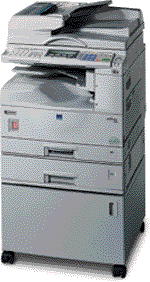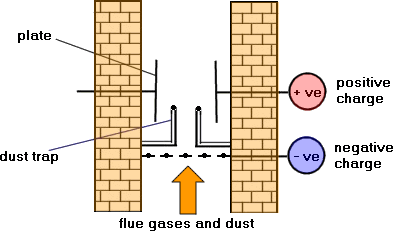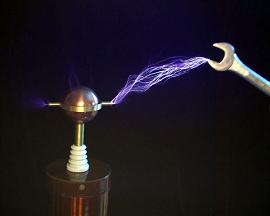Uses of Static Electricity
|
|
 |
There are a few webpages on the photocopier that
you might find useful to look at: -
Scientific American ( October 1996)
Australian National University Webpage
Photocopier Theory
 The Inkjet printer:
The Inkjet printer:
|
 |
 Cleaning the air with an electostatic precipitator
Cleaning the air with an electostatic precipitator
As the waste gases pass the negatively charged wire grid the smoke particles pick up a negative charge. They are repelled by the grid, but attracted to the positive charge on large collecting plates. They stick to the plates, which are banged regularly by a metal striker causing the smoke particles to fall into the dust traps, from which they are removed. |
 |
Earthing (or 'grounding' in the US)
Earth is said to be at zero volts. If a charged object is connected to earth by a conductor, electrons will pass between the charged object and Earth until the object is at zero volts too. If the object lacks electrons (is at positive potential or lacks electrons) then electrons will run from Earth to the object and if it is at negative potential (has a negative charge - too many electrons!) then the opposite happens, electrons run to Earth from the object.
The symbol for for a connection to Earth is:

 |
The greater the charge on an isolated object, the greater the voltage (potential difference) between the object and earth. If the voltage becomes high enough, a spark may jump across the gap between the object and any earthed conductor which is brought near it. A charged conductor can be discharged safely by connecting it to earth with a conductor. Metal cased appliances are earthed via the plug (see section on the 3-pin plug and earthing of appliances) |
Follow me...





